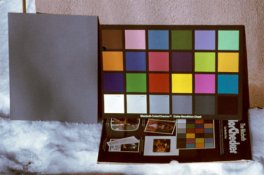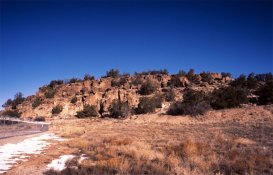mts
Member
A lot has been posted in the past, in published articles, and in various web pages about scratch-mixing E-6 chemistry. It's more difficult to achieve a proper speed/contrast/color balance with reversal films than color negative, but it can indeed be done with care and patience to test your chemistry.
Scratch-mix E-6 appeals to me for a couple of reasons. First, I started photography about 50 years ago mixing chemistry from the Kodak B&W formulae, as I was taught to do by a seasoned photographer who began his work in the 20s (that's the nineteen-20s). It was only much later in the 1960s that I learned you can actually buy chemistry kits.
Second, I process very little reversal film and want to have small quantities (1-liter) of chemistry readily available when I have a few rolls to process.
Third, an aspect that is interesting with reversal chemistry is the ability to modify the contrast and also (to a lesser degree) the color balance by adjusting the chemistry. Of course hand-processing E-6 makes push or pull processing easy, although that is of less interest to me now. I used to do some astrophotography with E-6 films and push-processing with contrast adjustments was important in days before CCD detectors completely eliminated photographic emulsions from astronomy.
The examples here are 35-mm Fuji Provia 100 processed in E-6 scratch mixed chemistry by hand in Nikkor tanks and reels. The scans were made from the positives with a Nikon 9000 ED.
I didn't have a recent MacBeth chart strip handy, so I processed one from film that was exposed several years ago and has been stored in the freezer. The scenic shot was made and processed last month (Feb. 2009). These films were processed using light reversal and with quinone bleach instead of the usual Fe-EDTA formula.
If anybody has interest in pursuing E-6 alternatives I will be happy to e-mail the formulae that I used.
Scratch-mix E-6 appeals to me for a couple of reasons. First, I started photography about 50 years ago mixing chemistry from the Kodak B&W formulae, as I was taught to do by a seasoned photographer who began his work in the 20s (that's the nineteen-20s). It was only much later in the 1960s that I learned you can actually buy chemistry kits.
Second, I process very little reversal film and want to have small quantities (1-liter) of chemistry readily available when I have a few rolls to process.
Third, an aspect that is interesting with reversal chemistry is the ability to modify the contrast and also (to a lesser degree) the color balance by adjusting the chemistry. Of course hand-processing E-6 makes push or pull processing easy, although that is of less interest to me now. I used to do some astrophotography with E-6 films and push-processing with contrast adjustments was important in days before CCD detectors completely eliminated photographic emulsions from astronomy.
The examples here are 35-mm Fuji Provia 100 processed in E-6 scratch mixed chemistry by hand in Nikkor tanks and reels. The scans were made from the positives with a Nikon 9000 ED.
I didn't have a recent MacBeth chart strip handy, so I processed one from film that was exposed several years ago and has been stored in the freezer. The scenic shot was made and processed last month (Feb. 2009). These films were processed using light reversal and with quinone bleach instead of the usual Fe-EDTA formula.
If anybody has interest in pursuing E-6 alternatives I will be happy to e-mail the formulae that I used.










 )
)



